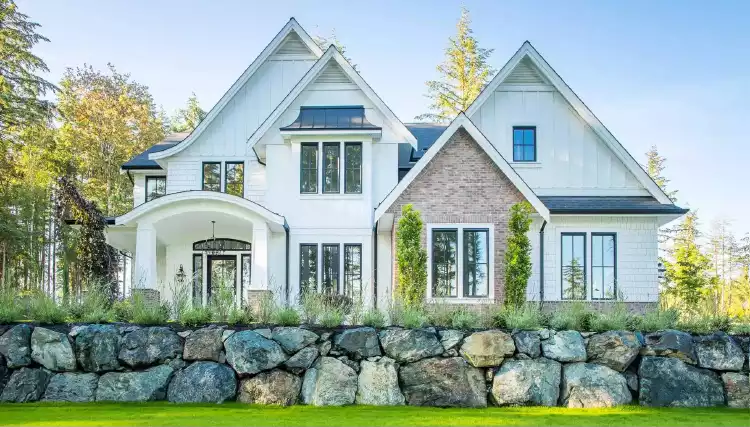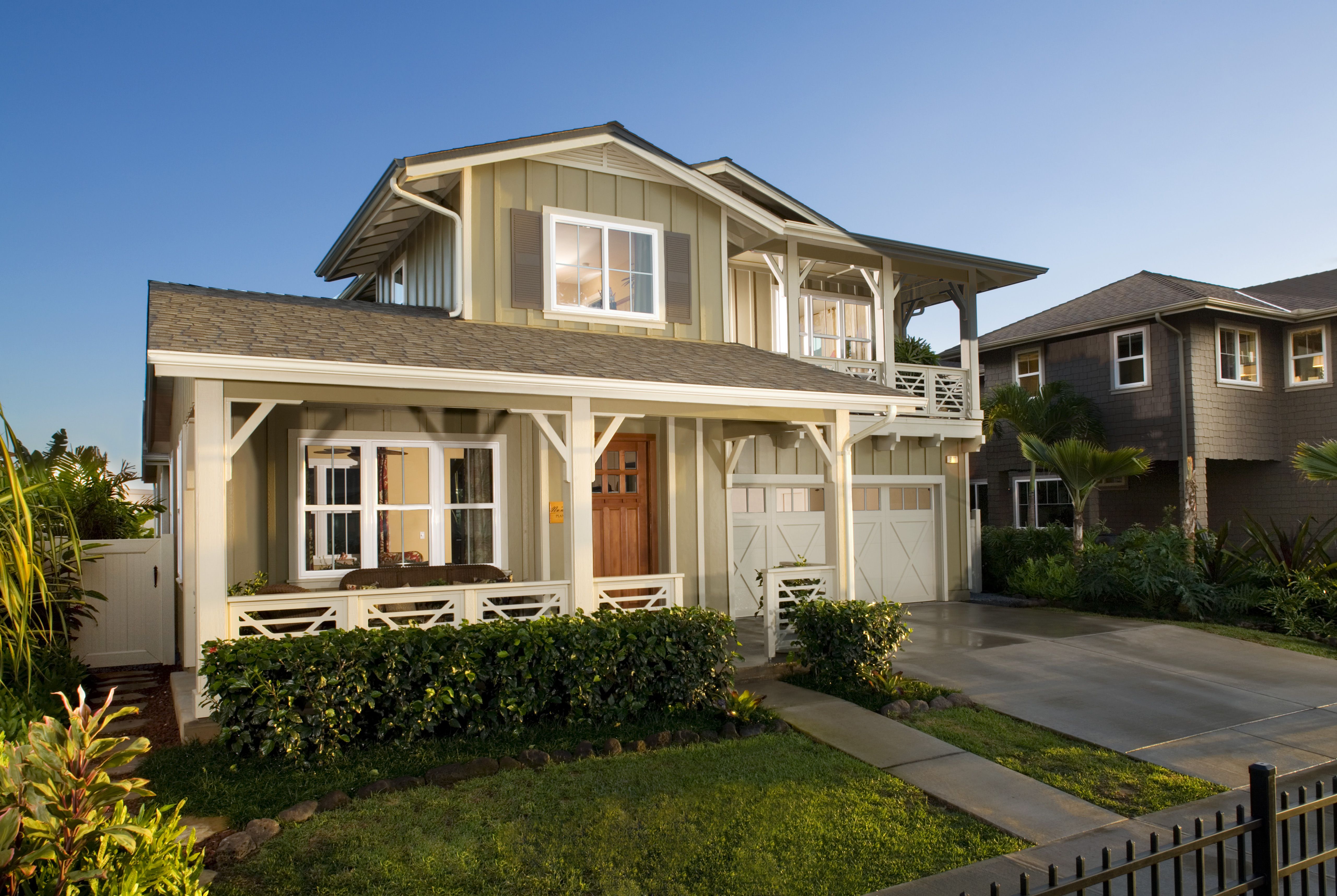Top Eco-Friendly Features for a craftsman style house
The Function of Arts & & Crafts Architects in Elevating Architectural Providers in Residential Design
Arts and Crafts architects greatly influence residential style with their commitment to craftsmanship and sustainability. They prioritize handmade information and natural materials, which enhance both aesthetic appeals and community identity. By involving customers in the layout procedure, these architects develop special home that reverberate with individual tastes. This technique raises concerns regarding the future trajectory of property architecture and its potential influence on community dynamics. craftsman style house. What exists ahead for this classic layout approach?

The Principles of Arts and Crafts Architecture
The significance of Arts and Crafts architecture lies in its dedication to workmanship and simpleness. This architectural activity arised in the late 19th century as a feedback to industrialization, stressing the value of handcrafted information and natural materials. The concepts of Arts and Crafts architecture focus on capability and consistency with the setting. Frameworks normally feature low-pitched roof coverings, large eaves, and exposed rafters, promoting a feeling of unity with nature.
Artisans played a significant role in this design, usually integrating ornamental elements like tarnished glass, ceramic tiles, and woodwork, which reflect neighborhood craftsmanship. The color scheme often tends to be natural and suppressed, allowing structures to mix effortlessly into their surroundings. In enhancement, the design urges open flooring plans and common spaces, promoting a sense of togetherness. On the whole, the principles of Arts and Crafts architecture celebrate the charm of simplicity and the significance of human link to both nature and neighborhood.

Lasting Practices in Residential Layout
While the need for eco liable living remains to grow, sustainable methods in property design have actually acquired significant traction among architects and home owners alike. Architects are increasingly including energy-efficient technologies and sustainable materials right into their layouts, intending to decrease carbon footprints and enhance energy conservation. Strategies such as passive solar design, green roofing systems, and rain harvesting systems are becoming common parts of modern household architecture.
The option of in your area sourced materials reduces transportation discharges and sustains local economic situations. Emphasis on natural light and ventilation not only improves interior air top quality yet likewise reduces dependence on synthetic lighting and climate control systems. These lasting practices show a dedication to preserving the environment while offering property owners with comfortable, reliable living areas. As understanding of environmental issues expands, the assimilation of sustainability in residential style is positioned to come to be a defining characteristic of modern architecture, assisted by the concepts look what i found established by Arts and Crafts architects.
Personalization and Customization in Home Style
Customization and customization in home style have become essential fads in response to the growing wish for distinct living atmospheres that show private tastes and way of lives. Home owners progressively look for to customize rooms that reverberate with their individualities, causing an extra meaningful link with their living rooms. craftsman style house. This activity encourages architects to engage customers in the design procedure, i was reading this fostering partnership that ensures the final outcome symbolizes the property owner's vision
Components such as bespoke formats, personalized products, and customized finishes allow for a diverse variety of expressions in property layout. Arts and Crafts architects play a pivotal duty in this advancement, stressing workmanship and top quality. Their focus on incorporating imaginative components with capability warranties that each home is not only aesthetically pleasing however also uniquely fit to the residents' requirements. This focus on personalization improves the total domestic experience, creating areas that are both personal and long-lasting.
The Effect of Arts and Crafts Architects on Area Aesthetic Appeals
As communities progress, the influence of Arts and Crafts architects considerably shapes their aesthetic landscape. By stressing handcrafted details, all-natural products, and conventional building and construction methods, these architects produce homes that resonate with their surroundings. Their designs typically integrate regional flora, textures, and colors, fostering a feeling of consistency in between constructed environments and nature.
The Arts and Crafts motion promotes neighborhood identification through building continuity. By motivating house owners to adopt comparable style principles, neighborhoods create a cohesive character that boosts visual allure. This architectural harmony not only enriches the aesthetic experience yet also infuses a feeling my company of satisfaction among citizens.
Additionally, the concentrate on sustainability and workmanship in Arts and Crafts architecture aligns with modern worths, making these styles relevant in modern settings. Inevitably, Arts and Crafts architects contribute substantially to the total beauty and cultural integrity of areas, leaving a long-term influence on their visual tradition.

Future Fads in Arts and Crafts Architecture
With an enhancing emphasis on sustainability and customization, future patterns in Arts and Crafts architecture are positioned to mix standard workmanship with modern-day innovation - craftsman style house. Architects are most likely to prioritize environment-friendly products, making use of reclaimed timber and natural stone to boost the sustainability of household layouts. The combination of clever home modern technology will certainly come to be typical, permitting customized living experiences without jeopardizing aesthetic integrity
Furthermore, the resurgence of artisanal methods will foster a renewed admiration for handmade components, such as bespoke kitchen cabinetry and customized tile work. Future designs may likewise mirror an emphasis on community-oriented areas, encouraging interaction and link among residents. Outside living areas will acquire prominence, effortlessly integrating nature into the home atmosphere. As Arts and Crafts architecture develops, it will certainly proceed to recognize its roots while adapting to contemporary needs, developing harmonious spaces that show specific worths and lifestyles.
Frequently Asked Questions
What Motivated the Arts and Crafts Movement in Architecture?
The Arts and Crafts activity in architecture was influenced by a response against industrialization, highlighting handcrafted quality, all-natural products, and a return to standard craftsmanship, aiming to produce harmonious, functional spaces that commemorated creativity and individuality.
Exactly how Do Arts and Crafts Architects Collaborate With Clients?
Arts and crafts architects work together with clients via open discussion, prioritizing personal requirements and looks. They emphasize craftsmanship and sustainability, promoting a collaboration that integrates the client's vision with the designer's competence in design and materials.
What Products Are Frequently Utilized in Arts and Crafts Homes?
Typical products in Arts and Crafts homes consist of natural wood, stone, and brick, emphasizing workmanship and natural visual appeals. These elements produce a cozy, welcoming environment, mirroring the movement's devotion to quality and simpleness in layout.
Exactly how Do Arts and Crafts Layouts Boost Indoor Living Areas?
Arts and Crafts styles enhance indoor home by advertising all-natural light, open floor plans, and handcrafted information. These components foster a cozy, welcoming ambience, motivating a connection in between citizens and their atmospheres with thoughtful, functional aesthetic appeals.
What Are Some Famous Instances of Arts and Crafts Architecture?
Famous examples of Arts and Crafts architecture include the Wager House, Greene and Greene's work of art in California, and the Robie Home by Frank Lloyd Wright. These structures display handcrafted details and consistency with nature, defining the movement's significance.